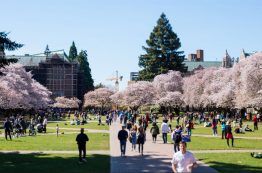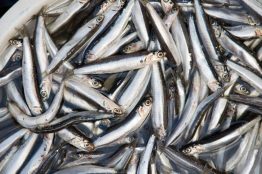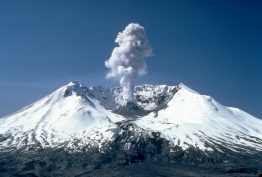We’re constantly impressed at the ingenuity and resilience of College of the Environment students. Now that we have all had time to adjust to this new way of living, we checked in with four students at the College to see how their studies and work lives have changed, hear about the challenges and opportunities they have found in online courses and listen to how they’re taking care of themselves in the era of COVID-19.
Read more »Ocean ‘breathability’ key to past, future habitat of West Coast marine species
Marine life off the West Coast, from Mexico up through Canada, inhabit the California Current. The cool, nutrient-rich water supports life from invisible phytoplankton to the economically important salmon, rockfish and Dungeness crab to the majestic orcas. A new study led by the University of Washington finds that the animals’ ability to breathe in that water may be key to where and when they thrive.
Read more at UW News »Then and Now: The Mount St. Helens Eruption, four decades later
It wasn’t supposed to be Mount St. Helens. In the 1970s, scientists including Emeritus Research Professor Steve Malone (then a postdoctoral researcher at UW) investigated what they believed to be earthquakes on Mount Rainier. Further work determined they were “glacier quakes” instead: As glaciers on a mountain shift, the energy created mimics an earthquake. Then in 1975, Mount Baker began to steam.
Read more »Seismologists to host virtual event on 40th anniversary of Mount St. Helens eruption
The Pacific Northwest Seismic Network, based at the University of Washington, will host an online event on the 40th anniversary of the eruption of Mount St. Helens, featuring seismologists from the UW and other institutions who can explain the events before, during and after the historic blast. The virtual event will take place from 6:30 to 8 p.m., Monday, May 18, on the PNSN’s YouTube channel — exactly 40 years after the blast.
Read more at UW News »Antarctic sea-ice models improve for the next IPCC, UW study shows
The world of climate modeling is complex, requiring an enormous amount of coordination and collaboration to produce. Models feed on mountains of different inputs to run simulations of what a future world might look like, and can be so big — in some cases, lines of code in the millions — they take days or weeks to run. Building these models can be challenging, but getting them right is critical for us to see where climate change is taking us, and importantly, what we might do about it.
Read more »





